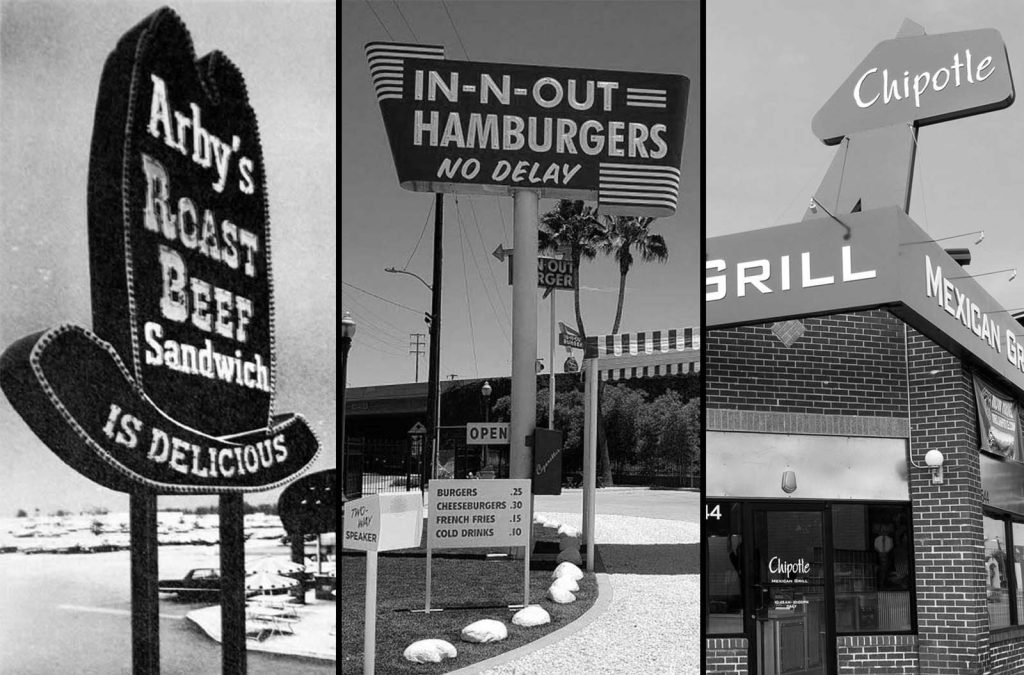
There are so many fast-food signage that you can’t ignore them as you drive through any big American metropolis.
But these drive-thrus weren’t always a frequent sight at every highway stop. They began off like your neighborhood pizza business, with small beginnings. The early fast-food places were very different from what you see now.
A lot of the time, the people who began these restaurants didn’t have a lot of money, but they had huge plans. They took a risk and opened what are now some of the best fast food places in the US.
Want to know how the famous Golden Arches of McDonald’s appeared before they became symbols of wealth? Have you ever thought about whether White Castle really looked like a castle?
Are you curious in how Taco Bell got its unique Mexican-inspired flavors? Want to see Wendy’s, where the square patties rule? Are you curious if the well-known Domino’s emblem has always been on their storefronts?
So, if you want to take a trip down memory lane and learn where your favorite restaurants came from, read on for an interesting trip back in time.
Arby’s (1964)
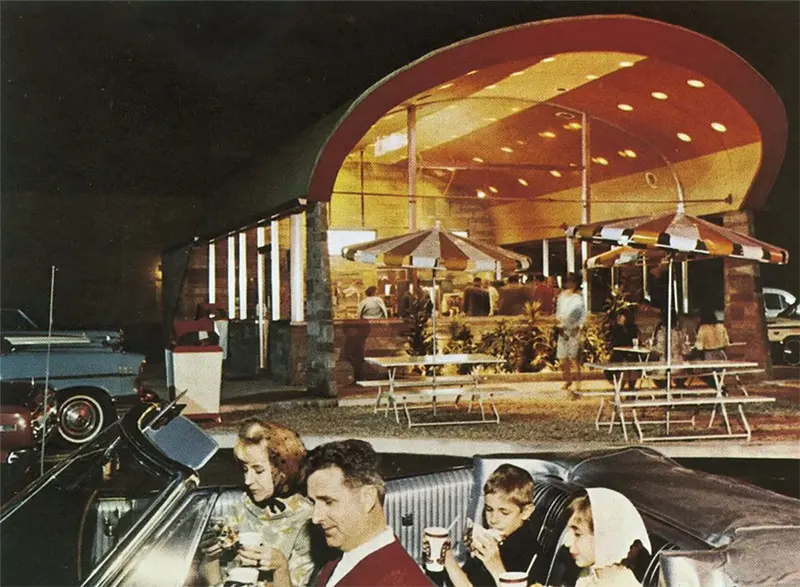
On July 23, 1964, brothers Forrest and Leroy Raffel opened Arby’s in Boardman, Ohio. They owned a restaurant equipment business and thought there was a market for a fast food franchise that served something other than hamburgers.
They planned to name their eateries “Big Tex,” but that name was already taken by a business in Akron.
They picked the name “Arby’s” instead, which comes from the initials of Raffel Brothers (R.B.). People commonly confuse it with “Roast Beef.”
On July 23, 1964, the Raffel brothers launched the first new restaurant in Boardman, Ohio, which is just outside of Youngstown. At first, they simply offered soft drinks, potato chips, and roast beef sandwiches.
Arby’s interior design was meant to be more posh than the average fast food sandwich stand of the time in order to attract a more upscale customer base.
Blimpie (1964)
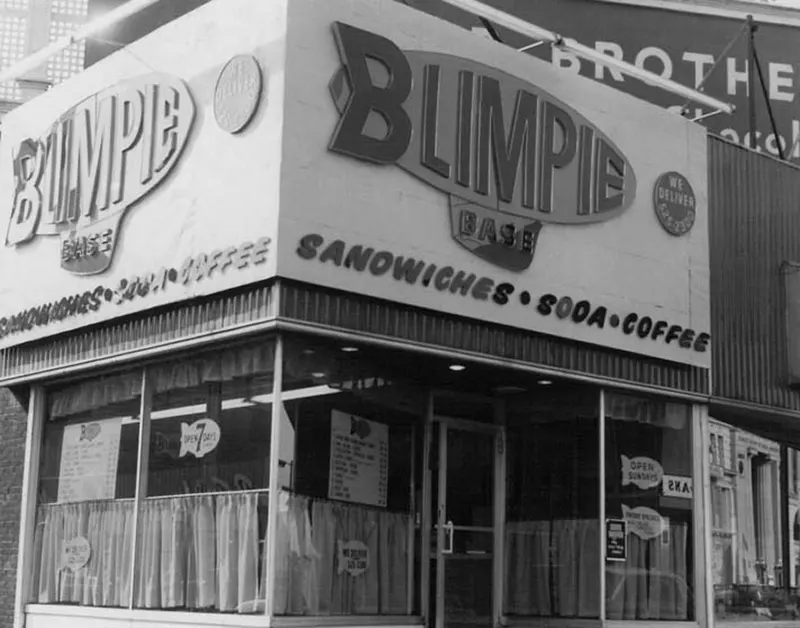
Bojangles (1977)
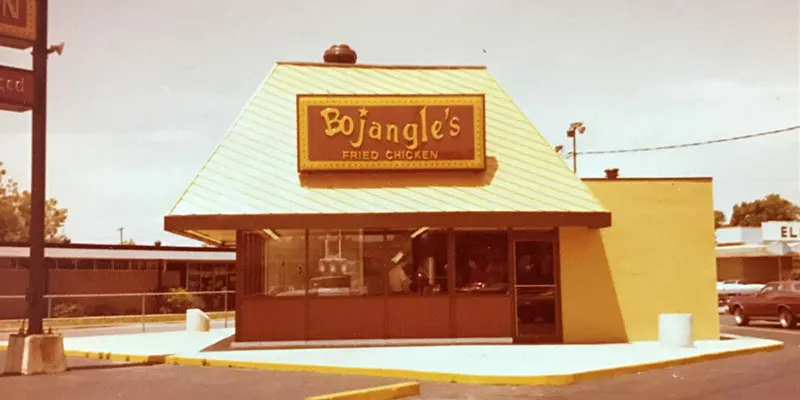
Jack Fulk and Richard Thomas started Bojangles, and the first store opened in Charlotte, North Carolina. “Bojangles” is a nod to a well-known song from the 1920s that brings to mind happy memories.
From the beginning, it was evident that Bojangles wanted to do more than just serve food; they wanted to give people an experience.
The restaurant rapidly drew attention for its distinctive menu, which was based on Southern classics. The smell of freshly cooked buttermilk biscuits filled the air as soon as the doors opened.
These flaky, golden-brown treats quickly became a signature dish at Bojangles, along with its delicate fried chicken and tasty sides.
Burger King (1954)
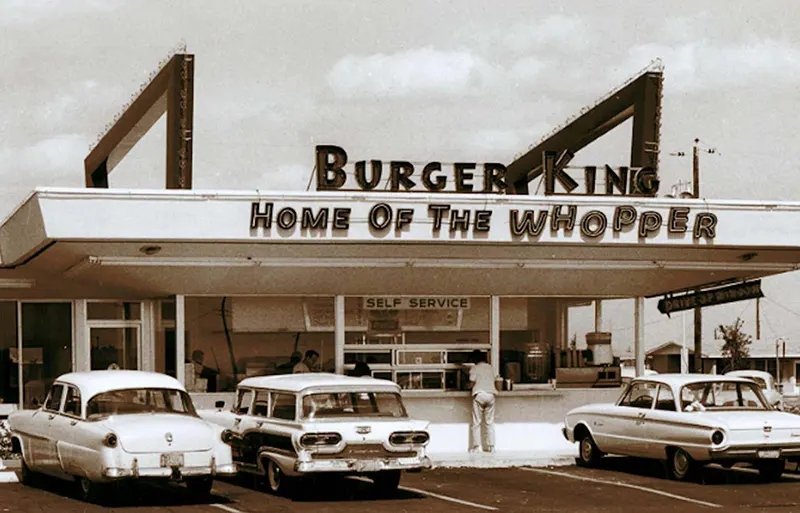
Keith J. Kramer and Matthew Burns worked together to start Burger King. They started their business because they thought fast food might be better than just quick bites. They wanted to create a dining experience that felt more substantial and enjoyable.
The moniker “Burger King” was a direct reflection of this goal. It was meant to suggest that the founders wanted their meal to be seen as high-quality and royal.
Burger King’s menu has grown from just burgers, fries, sodas, and milkshakes to include a wider range of items.
The “Whopper” was the first big item added to the menu in 1957, and it has been Burger King’s most popular item ever since.
On the other hand, Burger King has come out with a lot of things that didn’t do well in the market.
Some of these mistakes in the US have worked out in other countries, as Burger King has likewise changed its menu to fit local tastes.
Chick-fil-A (1967)
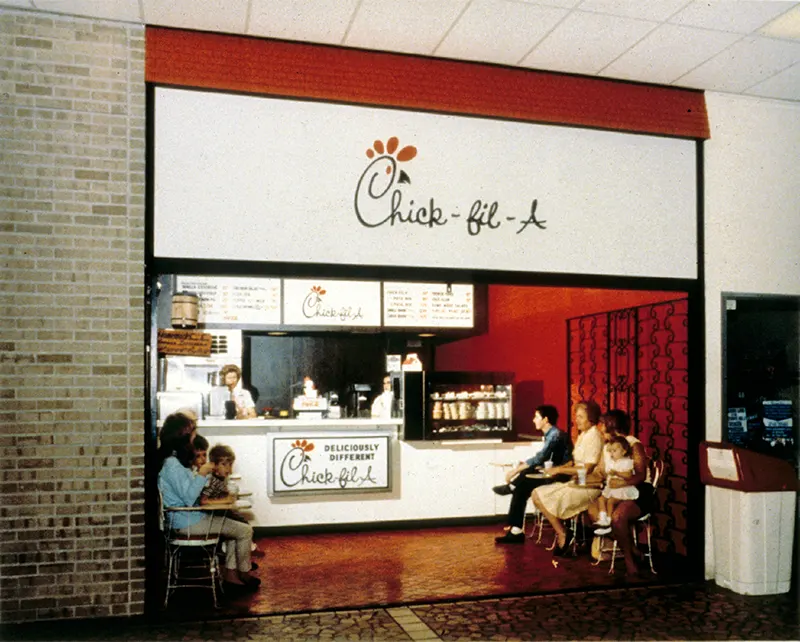
The Dwarf Grill, which is now the Dwarf House, was the first restaurant in the franchise. It debuted in 1946 by S. Truett Cathy, who was the chain’s first chairman and CEO.
The name “Chick-fil-A” sums up what the menu’s main dish is: chicken. The “Chick” is a reference to the key ingredient, and the “fil-A” shows how much they care about quality and excellence.
The “A” stands for the restaurant’s promise to offer the best food and service.
In the 1970s and early 1980s, the brand grew by launching new restaurants in the food courts of suburban malls.
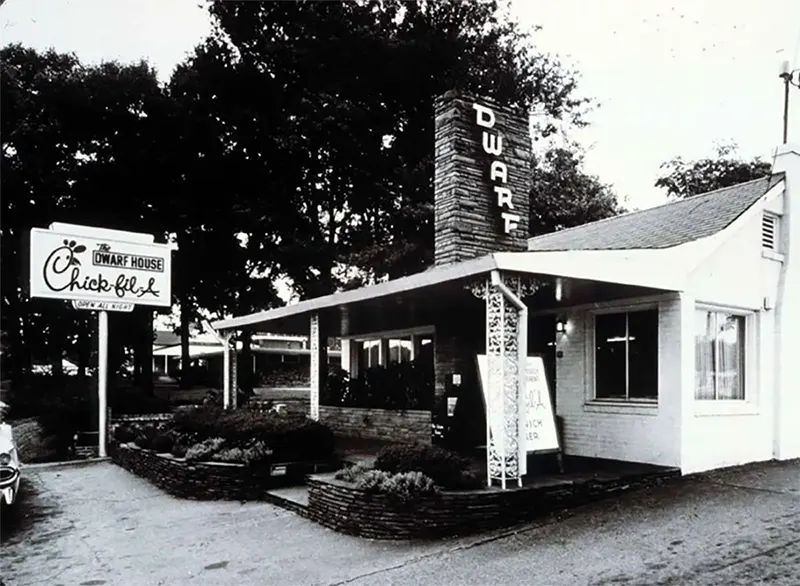
The first stand-alone shop opened on April 16, 1986, on North Druid Hills Road in Atlanta, Georgia. After that, the corporation started to focus more on this sort of unit than on the food court type.
Most of the new eateries are still in the southern suburbs, even if they have grown beyond their original geographic basis.
Chipotle (1993)
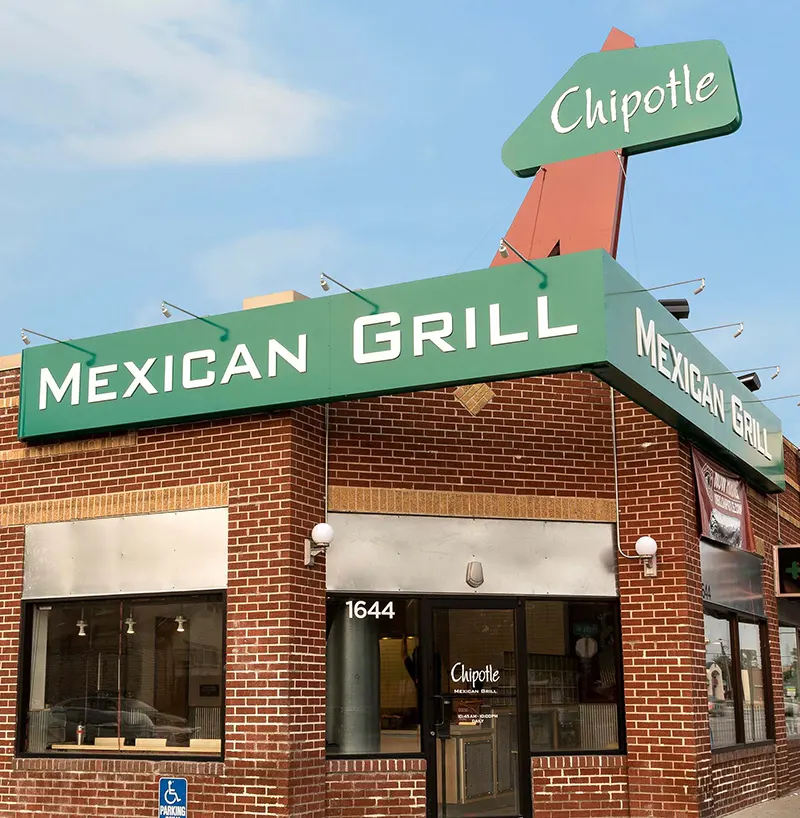
Chipotle came into the market in 1993 and changed the way people thought about Mexican food. Steve Ells started the restaurant, and the name is a hint at the way they cook and their dedication to excellence.
The word “chipotle,” which is pronounced chi-POHT-lay, comes from the Nahuatl language, which the Aztecs spoke. It means a jalapeño pepper that has been smoked and dried.
The first Chipotle restaurant, which opened in Denver, Colorado, came up with a new idea: the production line.
Customers could choose from a variety of freshly made ingredients to make their meals unique. This method worked well for diners who wanted a more personalized meal.
Domino’s (1960)
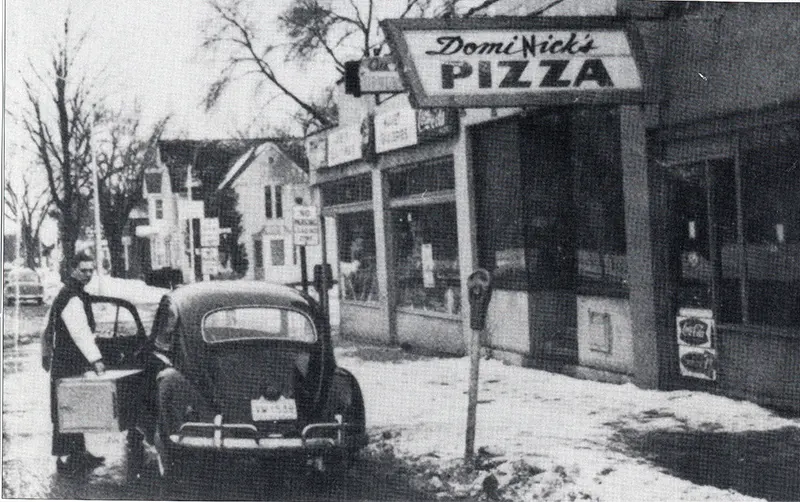
Tom Monaghan and his brother James took over the running of DomiNick’s, a small pizza restaurant business that had been owned by Dominick DeVarti, at 507 Cross Street (now 301 West Cross Street) in Ypsilanti, Michigan, in 1960.
By 1965, Tom Monaghan had bought two more pizzerias, bringing his total to three in the same county.
Monaghan wanted the stores to have the same name, but the original owner wouldn’t let him use the name DomiNick’s.
Jim Kennedy, an employee, came back from delivering a pizza one day and offered the name “Domino’s.” Monaghan embraced the idea right away and legally changed the name of the company to Domino’s Pizza, Inc. in 1965.
The initial company logo included three dots, one for each of the three stores in 1965. Monaghan wanted to put a new dot for every new location, but this vision quickly faded as Domino’s grew quickly.
Dunkin Donuts (1948)
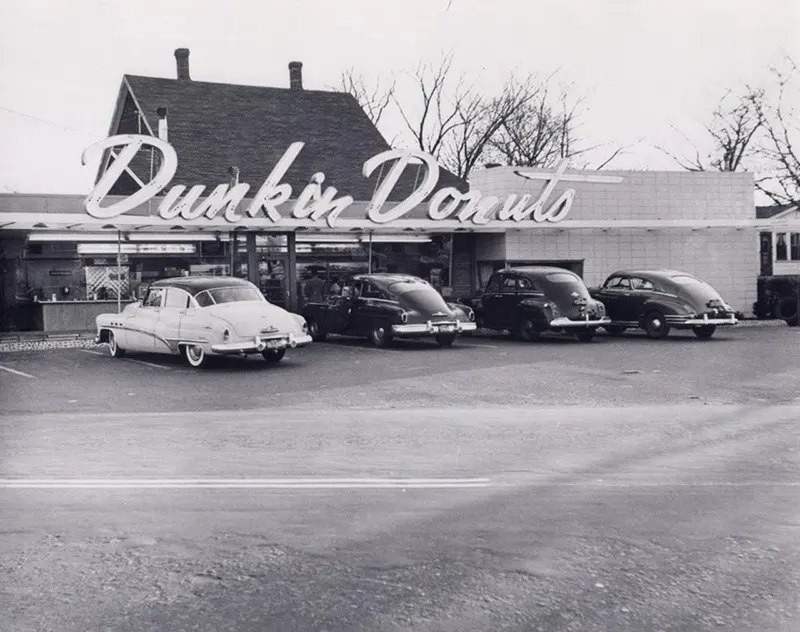
Bill Rosenberg established Open Kettle in 1948 in Quincy, Massachusetts, a suburb of Boston. It sold coffee and donuts. In 1950, after talking to business executives, he changed the name to Dunkin’ Donuts.
He came up with the idea for the restaurant after working in factories and on construction sites where he sold food. Donuts and coffee were the two most popular things.
The restaurant did well, and in 1955, Rosenberg began selling franchises to other people.
In-N-Out Burger (1948)
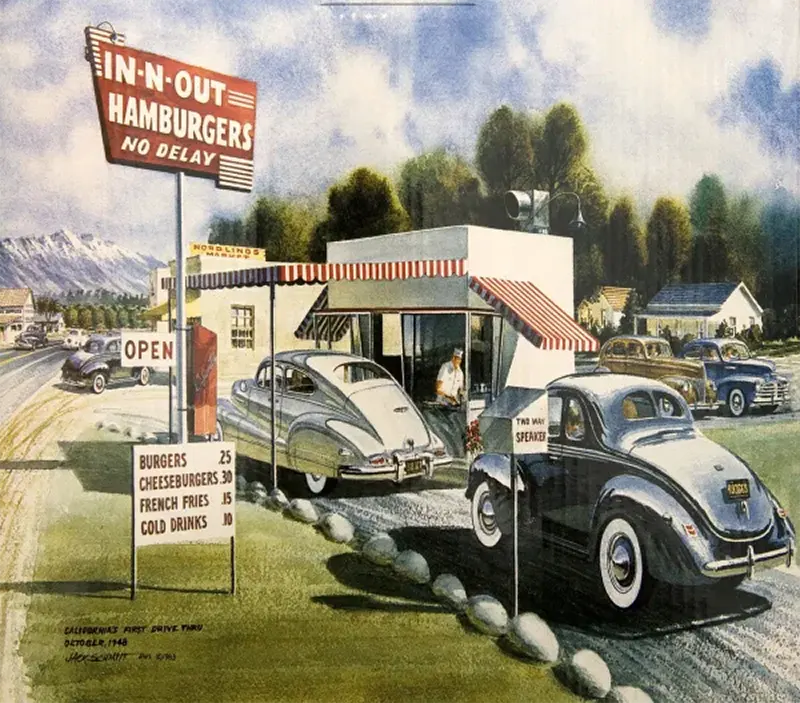
Harry and Esther Snyder started In-N-Out in Baldwin Park, California, in 1948. The original store opened in Baldwin Park, a suburb of Los Angeles, at the southwest corner of what is now the crossroads of Interstate 10 and Francisquito Avenue.
The eatery was the first hamburger stand in California with a drive-thru. Customers could place orders over a two-way speaker system.
Carhops took orders and served food in California after World War II, thus this was a fresh and different idea.
People know that the restaurant chain uses fresh, never-frozen meat, hand-cut French fries, and milkshakes prepared with real ice cream.
The restaurant’s simple menu, focus on quality, and famous yellow arrow signs have all helped make it successful and give it a cult-like following.
The “secret menu” also lets customers change and mix up their orders, which makes the brand more appealing and unique.
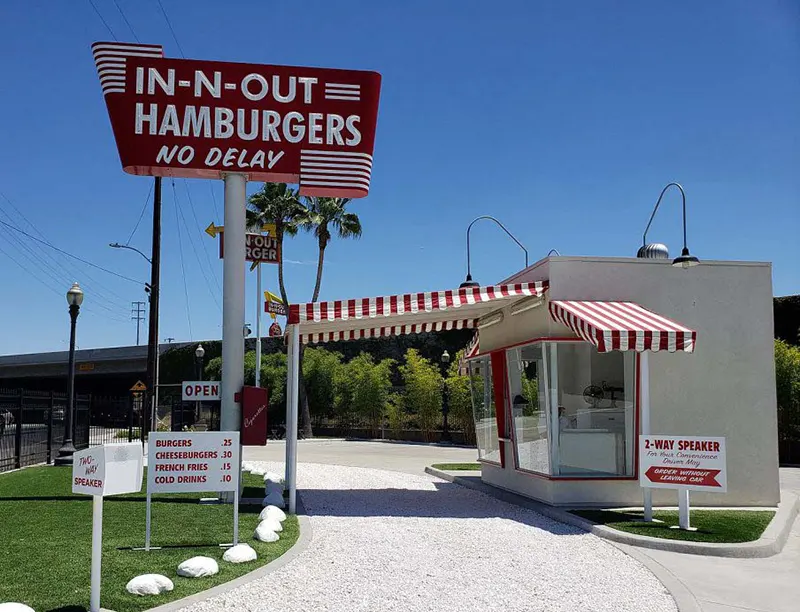
In-N-Out Burger has decided not to franchise or go public. One reason is because they are worried that their food quality or customer service would suffer if they grow too quickly.
Several customer satisfaction polls have rated In-N-Out as one of the best fast-food restaurants. The brand has built up a very loyal client base.
KFC (1930)
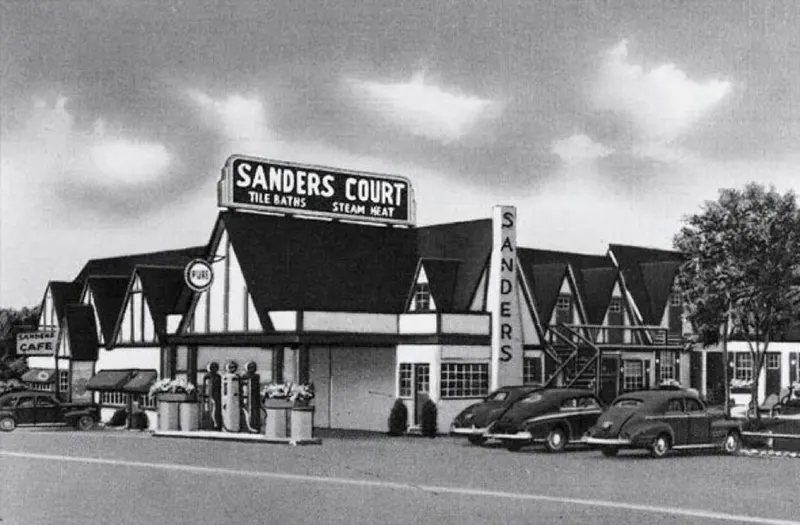
In the 1930s, Harland Sanders, a retired chef and businessman, began serving tourists his famous fried chicken at his gas station.
The name “Kentucky Fried Chicken” was chosen to honor the state where Sanders learned how to cook and came up with his secret mix of 11 herbs and spices.
People instantly liked the colonel’s fried chicken since it tasted and was made differently. Sanders used a pressure cooker to make the crust crispy and tasty while keeping the flesh moist and soft. This is what made his chicken different from others.
The first official KFC franchise opened in 1952, signifying the change from a small gas station restaurant to a fast-food chain empire.
KFC’s first product was chunks of chicken that were pressure-fried and seasoned with Sanders’ famous “11 herbs and spices” formula. The recipe’s ingredients are a closely guarded secret.
A cardboard “bucket” holds larger pieces of fried chicken. This has been a part of the company since franchisee Pete Harman introduced it in 1957.
Krispy Kreme (1937)
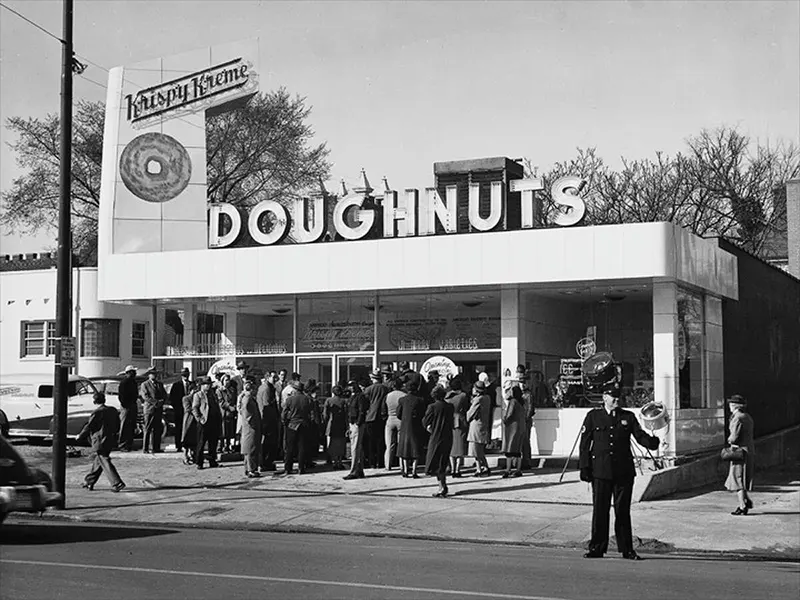
In 1937, Krispy Kreme opened as a modest doughnut store in the middle of Winston-Salem, North Carolina, with huge plans.
The name Krispy Kreme shows that the company wants to provide doughnuts that are, in a very real sense, crunchy and creamy.
The phrases “Krispy” and “Kreme” go together to make a cute play on words that hints at the doughnuts’ light, airy texture and the decadent sensation they promise.
Vernon Rudolph, the brand’s originator, started manufacturing doughnuts in the late 1930s after getting a secret formula.
People immediately learned that the original Krispy Kreme doughnuts were so excellent that they melted in your tongue, and the modest shop became very popular in the area.
From 2000 until 2016, the company grew steadily before making an aggressive move to become a public corporation, which turned out to be a bad idea.
The company went back to being privately owned in 2016. In July 2021, Krispy Kreme became publicly traded on the Nasdaq again.
McDonald’s (1948)

In 1948, a little drive-in restaurant called McDonald’s opened in San Bernardino, California. This was the beginning of a change that would change the fast-food industry forever.
The name “McDonald’s” is simple, which fits with the brand’s original goal of serving quick, consistent, and cheap meals.
The name of the restaurant came from the names of its founders, Richard and Maurice McDonald. The McDonald brothers’ new idea went beyond just the moniker.
They came up with the “Speedee Service System,” which focused on making the production process more efficient so they could serve the same tasty dishes in record time. This method set the stage for how fast food would work in the future.
Ray Kroc, a businessman, joined the McDonald brothers in 1955 and helped them grow their idea into a national and then global business.
As McDonald’s grew, the core values of efficiency, affordability, and consistency stayed the same. McDonald’s golden arches, which were first used in the 1960s, became famous symbols of the company.
Pizza Hut (1958)
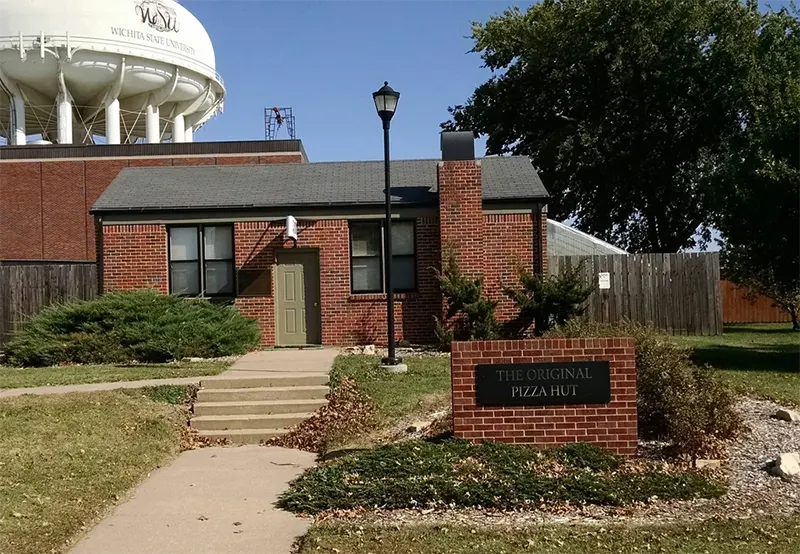
On May 31, 1958, two brothers, Dan and Frank Carney, who were students at Wichita State University, opened the first Pizza Hut in Wichita, Kansas.
The sign on the building could only fit nine letters. The brothers wanted to use the word “Pizza” in the name, which only left enough for three additional letters. Someone in the family said the building looked like a hut, and Pizza Hut was created.
Pizza Hut came up with a new idea: pizza that could be eaten outside of Italian restaurants. Their innovative way of offering delivery and dine-in alternatives paved the way for the growth of fast-casual dining.
The brand’s famous red roof, which was added in the 1960s, became an indication of how friendly the pizza place would be.
Popeyes (1972)

In St. Bernard Parish, Louisiana, a suburb of New Orleans, Popeyes was founded in Arabi. “Chicken on the Run” was the name of the restaurant when it initially debuted on June 12, 1972.
Al Copeland, the owner, sought to compete with Kentucky Fried Chicken, but his store closed after a few months.
Four days later, Copeland opened the restaurant again as Popeyes Mighty Good Chicken. The company changed its name to Popeyes Famous Fried Chicken in 1975.
The name “Popeyes” comes from the famous character Popeye the Sailor, who was known for his love of spinach and power.
Copeland also wanted to open a restaurant that would be known for its rich and filling food.
Sonic Drive-In (1953)
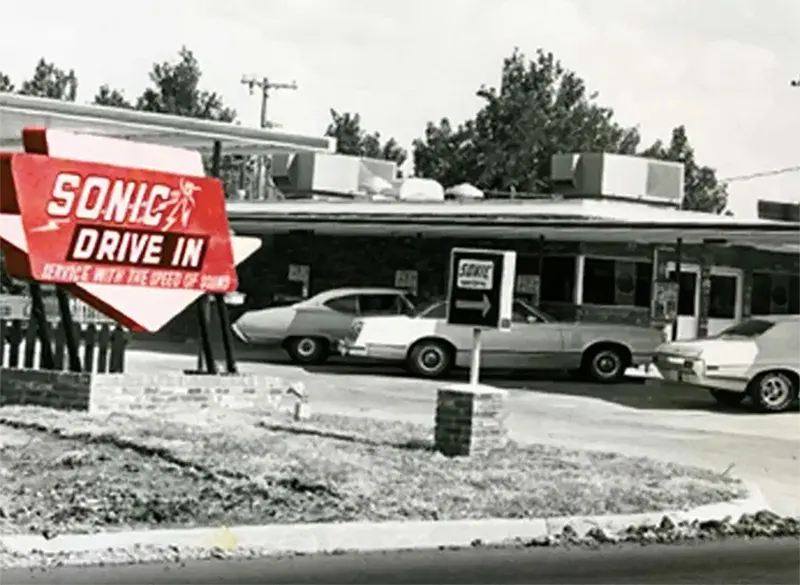
Sonic Drive-In, a new type of restaurant, opened in 1953. It changed the way people thought about quick food.
The name “Sonic” shows how important speed and service are to the brand. It also sums up the company’s unique notion of bringing food to customers’ cars.
The first Sonic Drive-In opened in Shawnee, Oklahoma, in 1953. It was called the Top Hat Drive-In at the time.
Troy N. Smith, the founder, wanted to develop a one-of-a-kind eating experience that blended the ease of drive-in service with a wide range of freshly produced food options.
Carhops, or servers on roller skates, gave Sonic a unique touch. The colorful canopies and outdoor seating at Sonic Drive-In restaurants helped to strengthen the brand’s image.
Subway (1965)
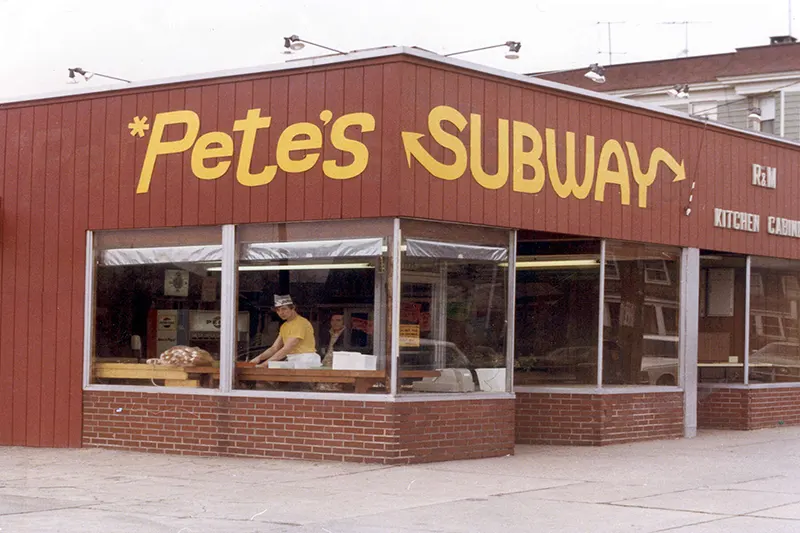
Fred DeLuca borrowed $1,000 from his buddy Peter Buck in 1965 to open “Pete’s Drive-In: Super Submarines” at 3851 Main Street in Bridgeport, Connecticut. The next year, they started Doctor’s Associates Inc. to run the restaurants as the franchise grew.
The holding company’s name comes from DeLuca’s objective of making enough money from the business to pay for medical school and Buck’s possessing a degree in physics. The sandwich store got a new name, “Subway,” in 1968.
Taco Bell (1954)
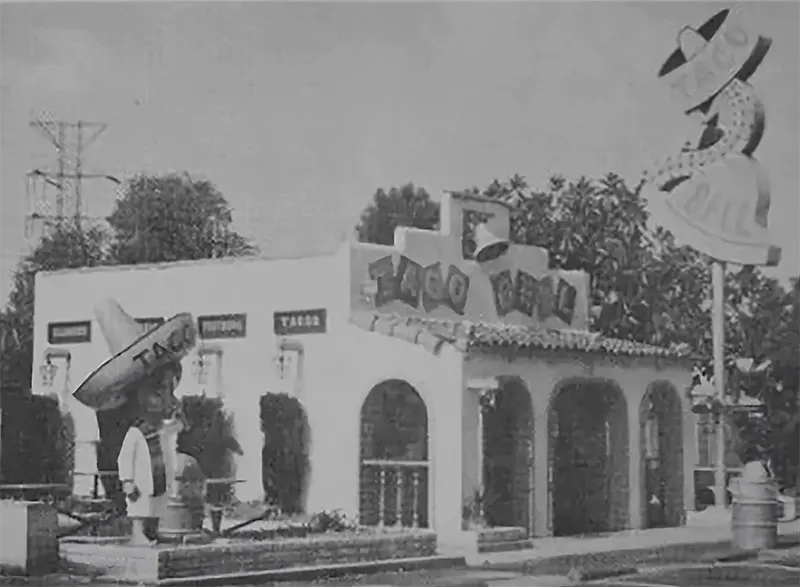
Glen Bell, an entrepreneur, started Taco Bell. He launched a hot dog business called Bell’s Drive-In in San Bernardino, California, in 1948.
Bell saw enormous lines of people waiting to get into the Mitla Cafe, a Mexican restaurant across the street that was known for its hard-shelled tacos.
Bell tried to figure out how to make the tacos by looking at the recipe backwards. In the end, the proprietors let him see how they were made.
In 1951, he launched a new booth with everything he had learnt. The name changed a several times, from Taco-Tia to El Taco to Taco Bell.
(Photo credit: Wikimedia Commons / Flickr / Pinterest).


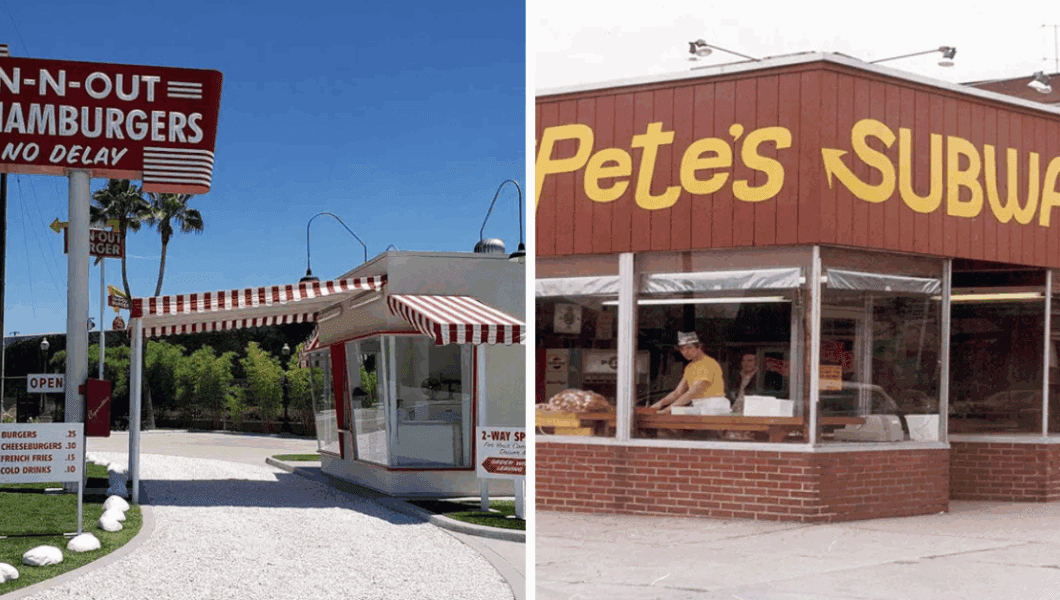
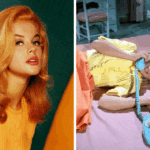
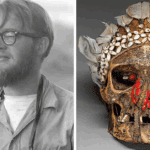
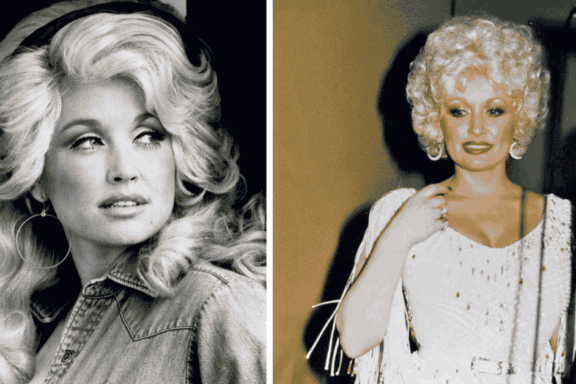
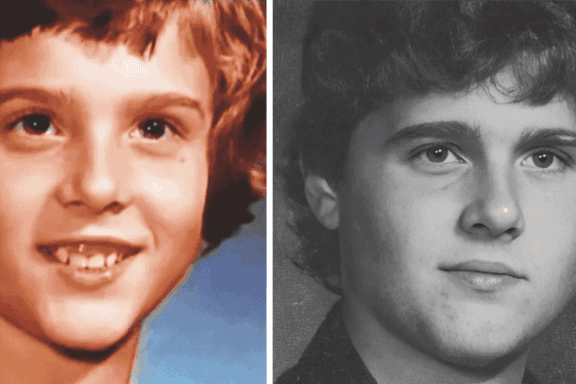

No Comments